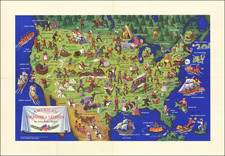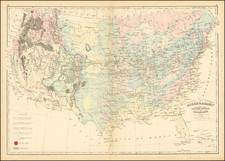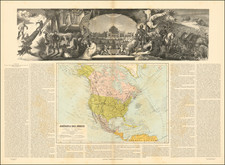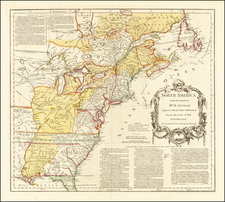The Black Tulip of American Persuasive Cartography. Only the Third Example Traced.
Augustus MacKay's The Man of Commerce is the most inventive American map of the 19th century, equating the American transportation network with the form and functions of the human body.
The wall map of North America was conceived of as a promotional piece for West Superior, Wisconsin, a manufacturing and transport hub at the western end of Lake Superior. The map of North America has transposed over it a cutaway diagram of a human body. Major organs are aligned with areas of the geography of the United States and Canada. Thus, by way of analogy, the connections and importance of certain cities and geographical features are compared to those of the human body. Lake Michigan and its surroundings, including Chicago, are compared with the liver; Lakes Huron, Erie, and Ontario are compared to the colon; New York the “umbilicus;” James Bay the spleen; the Gulf of St. Lawrence the rectum[!]; and “West Superior becomes the center of the cardiac or heart circulation.” In a nice touch, the sciatic nerve is identified with the trans-Atlantic cable. Completing the metaphor, the major arteries of the human circulatory system are laid out, with each equated to one of the nation’s major rail lines and many converging on the “heart” at Superior. The lower (right) hand of the body reaches out into the Pacific where Hawaii would be - but it was still more than 10 years away from becoming a U.S. Territory, and so is not rendered.
While the map has an undeniable arresting visual quality, its persuasive effect is undermined by the imperfect match of the body to what we actually understand about American economic geography now and in the 19th century. Western Lake Superior (particularly Duluth) was an important conduit in the transportation flowing from the Plains and Upper Midwest to the East, but nothing like Chicago, the real hub of American commerce at the time. The concept of personifying North America like a human body is so enticing and has such great precedents in cartographic history (Sebastien Munster's Europe as a Queen, for instance), that one cannot help but wonder how else this map could have been organized.
Rarity
The map is extraordinarily rare, and we are aware of only two other examples, one at the American Geographical Society Library in Madison, Wisconsin, and another in a Midwest private collection. Further evidence of the map’s rarity is its absence from the archive of the Rand McNally Company at the Newberry Library. OCLC locates 1 example (AGS, as previously noted). An example illustrated by the Library of Congress is actually a digital image from AGS.
Background
The Land & River Improvement Company of West Superior was organized by John Henry Hammond (1833-1890) a New York City native who moved to Kentucky with his widowed mother at an early age. Hammond was trained as a civil engineer and saw service in the Union Army during the Civil War. In the post-war years, he worked first in the South and then in the Midwest, in banking, railroads, and real estate, briefly serving as Superintendent of Indian Affairs for the Dakota Territory.
Having purchased a large tract of land at the western end of Lake Superior in Wisconsin, Hammond launched the Land & River Improvement Company in 1883 (or 1886, sources vary). West Superior eventually became Superior, Wisconsin, the "Twin Port" with Duluth, Minnesota.
The finest and rarest American persuasive maps of the 19th century.












![Colton's United States Shewing Military Stations, Forts &c. . . . 1861 [Shows Colorada!]](https://storage.googleapis.com/raremaps/img/small/95088.jpg)
![[The Russian Question] Die Russische Frage. Ein Schauspiel von K. Simonow](https://storage.googleapis.com/raremaps/img/small/83978.jpg)
